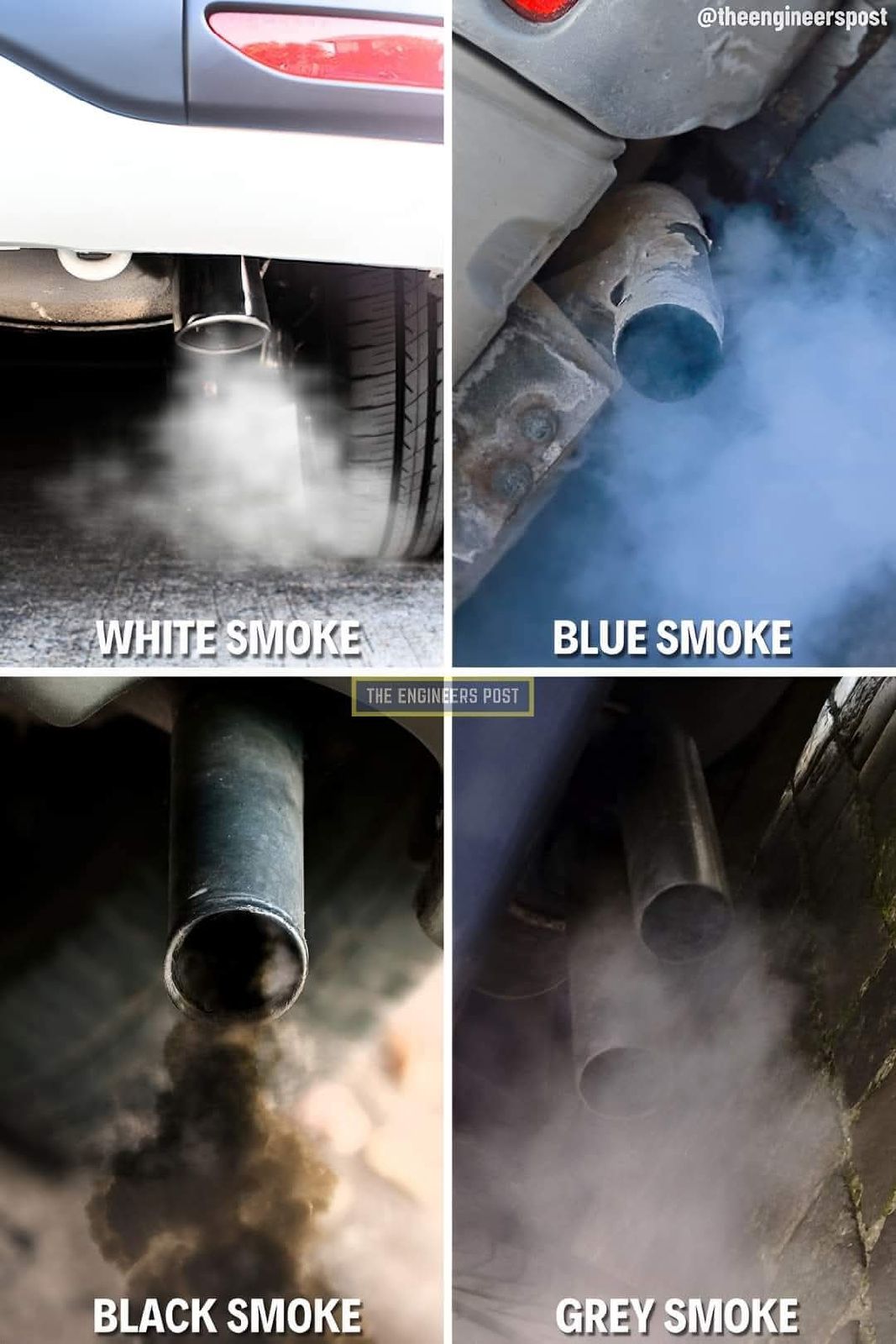Have you ever paid attention to the color of smoke coming from the exhaust pipe of your car? While this might sound odd, the color of your exhaust can give you information on how your vehicle is running and whether it needs attention. Exhaust is sometimes an easy indicator of car health.
1. White smoke:
The presence of water in the combustion chamber will create a whitish exhaust. One common cause of this is a broken or blown head gasket, which allows engine coolant/water to seep into your pistons, creating a white smoke with a noticeable odor.
2. Blue smoke:
This typically occurs when some engine oil is getting burned off. Worn or damaged piston rings can allow oil to enter the combustion chamber, creating smoke with a bluish tinge. This problem may be visible at startup but could disappear as your engine warms up.
3. Black smoke:
Black exhaust smoke usually occurs when there is incomplete combustion of your fuel/air mixture. This could be related to problems with the quality of your gas, engine airflow problems, or issues with your spark plugs and/or ignition coils.
4. 3. Grey Smoke:
Grey smoke in cars typically occurs from too much oil, a cracked PCV valve, or a transmission fluid leak. Incomplete combustion can occasionally happen as a result of a defective or failed turbocharger. Transmission fluid may potentially be causing grey smoke to appear.
If you see any of these exhaust colors, your engine needs attention. Before you spend a lot going to a mechanic or having work done on your engine, browse our catalog and identify the products that can take care of your issue.

No comments:
Post a Comment